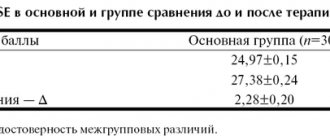Fat-soluble vitamin E is one of the most important beneficial elements for the human body. It contains the most valuable active compound - tocopherol, which is represented by several groups. Tocopherol is a powerful antioxidant, protects white blood cells from destruction, helps strengthen the immune system, supports the normal functioning of tissues and the entire body, and also has a beneficial effect on sexual function. Thanks to tocopherol, it is no coincidence that vitamin E is called the “vitamin of youth” - it is one of our body’s main helpers in the fight against aging.
What is vitamin E?
Vitamin E (tocopherol) is represented by a group of structurally similar chemical substances - tocopherols and tocotrienols. Dissolves in fats. It has extremely strong antioxidant properties, which provide its positive effect on the body.
Tocopherol fights the process of lipid peroxidation, prevents the formation of free radicals and their destruction of cell membranes.
Vitamin E and its beneficial properties were discovered more than 90 years ago. Since then, the favorable attitude of doctors towards tocopherol has only intensified, because its valuable effects are truly significant and noticeable.
Use in official medicine
Tocopherol plays an important role for the body; it maintains the desired level of cholesterol, restores damaged skin, normalizes the amount of hormones in the blood, alleviates PMS, helps improve vision, and ensures healthy hair. Vitamin E is involved in the fight against free radicals, prevents the development of pathologies and chronic diseases, minimizes the occurrence of cancer, improves muscle strength and endurance. It is important to take tocopherol during pregnancy for the normal development of the child.
The biochemistry of vitamin E indicates that it is more appropriate to take it in the form of a medication. Especially when it comes to the treatment of ataxia, which is represented by a motor disorder due to a deficiency of this component. The standard dose in such cases is 60-75 IU per day. Increased effectiveness is observed when combining the element with other medications, but only after consultation with a specialist.
The pharmacological sphere cannot do without vitamin E, which is used in the form of capsules of 0.4 g, 0.2 g and 0.1 g. Vitamin oil solution in ampoules or bottles, and the powder from which capsules are made, are also in demand in practice. tablets with 50% tocopherol content.
IU is an international unit, it is equal to 0.67 mg of a natural substance and 0.45 mg of a synthetic one. Just 1 mg of alpha-tocopherol equals 1.49 IU in natural form and 2.22 mg in its synthetic counterpart.
Vitamin E is necessary for humans for normal development and existence, and to prevent a number of diseases. Its deficiency negatively affects the functioning of internal organs and appearance. This is important to mention in a middle grade biology post.
Increased need for vitamin E
A sharp increase in the need for the vitamin occurs in pregnant women. Moreover, gynecologists recommend that expectant mothers take additional vitamin E throughout pregnancy, as well as until the end of breastfeeding.
Increased consumption of tocopherol is required during intense physical activity, sports, after the age of 40, when living in environmentally unfavorable areas, and when exposed to stress.
Women are also required to take this vitamin when approaching and after menopause. It is also recommended for teenage girls when their menstrual cycle begins.
Tocopherol consumption standards
The recommended daily dose for vitamin E can vary significantly in different countries - from 8 to 15 mg per day for adults. The difficulty in determining dosage lies in the fact that data on how much tocopherol is needed for normal body function was last revised about 20-25 years ago and was based on old studies. The European Food Safety Authority, based on more recent data, has determined the daily requirement for alpha-tocopherol at 13 mg per day for men and 10 mg/day for women. In Scandinavian countries, clinical guidelines were adopted in 2014, which recommend that women take 8 mg of vitamin E, and men 10 mg.
The generally accepted standards for tocopherol consumption in Russia are close to the official recommendations of the American Institute of Medicine. They suggest that healthy adults should get 15 mg of the vitamin per day, which corresponds to 22.5 IU of the natural substance or 33 IU of the synthetic preparation.
Table. "Daily requirement for tocopherol"
| Age | Amount of vitamin E, mg |
| Children under 1 year | 3-4 |
| Children 1-3 years old | 4 |
| Children 3-7 years old | 7 |
| Children 7-11 years old | 10 |
| Teenagers 11-14 years old | 12 |
| Boys and girls 14-18 years old | 15 |
| Women over 18 years old | 15 |
| Men over 18 years old | 15 |
There is another simple way to calculate an individual dose: for adults, the need for tocopherol is 0.3 mg per kilogram of body weight. For infants, this figure is higher – 0.5 mg/kg.
Where to get vitamin E in winter (video):
Where can I get vitamin E in winter? Live healthy! (01/11/2018)
Absorption of vitamin E from food
Like vitamin D, tocopherol is best absorbed in the presence of bile acids and fats. If you eat plant foods, for example, a salad of fresh vegetables, do not forget to season it with vegetable oil. Also use spices, they increase the release of pancreatic juice and bile, which improves digestion and absorption of the vitamin.
Vitamin C protects vitamin E from oxidation and potentiates its effects, so along with sources of tocopherol, it is useful to eat foods containing ascorbic acid. Eat more fruits and vegetables, they contain both vitamins.
Top best natural vitamin E preparations
Vitamin E of natural origin is a complex of 8 tocotrienols and tocopherols, but its synthetic analogues contain only 1 substance. There is an opinion that a natural antioxidant is healthier and safer than a synthetic one, but this is only a theory, which has no scientific confirmation.
It is worth noting that natural vitamin E is much more expensive than synthesized drugs, and finding it in pharmacies is quite problematic.
1. Jarrow Formulas is an American-made product. One unit of the drug contains 60 IU of the active substance.
It is recommended to take 1 capsule once a day. One package is enough for two full months.
The advantages include a completely natural composition. The disadvantages are high cost and long delivery times from online stores.
2.Dr. Mercola is another fairly well-known American drug. It is made from palm oil and rice. There are 30 capsules in a package, take 1 capsule per day.
- Pros: full range of isomers and absence of soy. Disadvantages, like the previous drug.
3. Solgar is inferior to the above products in terms of the number of isomers it contains. There are only 4 of them in this preparation. They are obtained from an extract of safflower oil.
- Advantages: wide variation in dosages (from 100 to 1000 IU in one capsule), availability of packages of 100 or 250 pieces.
- Disadvantages: can only be purchased through online resources, contains only half of the vitamin E isomers.
4. Zentiva is a drug produced in the Czech Republic. The package contains 30 capsules, each of which contains 300 IU of vitamin.
- Advantages: high quality products, lower price than American products.
- Disadvantages: order online, contains dye.
5. Myrrola is a low-dose natural preparation, 1 capsule contains from 10 to 15 IU of vitamin E.
- Pros: low risk of overdose.
- Cons: can only be used for preventive purposes.
Biological role of vitamin E
The functions of vitamin E in the body are very significant. The biological role of tocopherol is as follows:
- Due to its antioxidant effect, it increases the overall level of health and resists diseases
- Improves skin condition, timely renewal of its components
- Has a rejuvenating effect
- Protects blood vessels from atherosclerosis, slows down the development of cardiovascular diseases
- Improves the production of sex hormones, increases the likelihood of pregnancy, and fights infertility. Because of this, vitamin E is also recommended for use by men and women when planning a child, as well as for diseases of the gonads.
- Normalizes blood clotting
- Accelerates the healing of damaged tissues
- Enhances the effects of vitamin A and selenium.
Rules and recommendations for admission
In pharmacology, tocopherol is available in two forms:
- Capsules.
- Liquid.
The substance contains three main components - hydrogen, carbon and oxygen. The most popular form is capsules, which contain 0.1 or 0.2 grams of active ingredient.
Why do you drink vitamin E capsules? Doctors explain the prescription of this drug due to its antioxidant and radioprotective effects. It has already been proven that tocopherol is involved in the production of proteins and metabolic processes in the body. After entering the stomach, the substance quickly enters the blood, and then to the most distant cells.
There is an opinion that it is better to drink tocopherol in liquid form. But it is not so. If you compare capsules and liquid in terms of effectiveness, there is practically no difference.
How to drink vitamin E capsules? There are a number of nuances to consider here:
- The supplement should be taken after consulting a doctor. Indications for use may be pregnancy, muscle pain, eye diseases, diseases of the building tissue, and so on.
- How much is needed per day? Single serving - 0.1-0.4 grams . The maximum limit, which is prohibited to be exceeded, is 1 gram . Children are prescribed the supplement from the age of 12 at a dosage of 0.1 grams.
The second most popular form of tocopherol is liquid. The substance is released in bottles with a capacity of up to 20 ml (1 ml contains 100 mg of the element). The main active ingredient is tocopherol acetate. Indications for use:
- risk of miscarriage;
- disruption of the sex glands;
- rheumatism or arthritis;
- muscle dysfunction;
- spinal cord damage and so on.
If there are problems with the skin, blood pressure, as well as diabetes and psoriasis, complex therapy is carried out using other drugs.
How to take vitamin E in liquid in terms of dosage? A lot depends on the type of disease:
- for problems with blood vessels - 100 mg ;
- for skin diseases - 20-100 mg ;
- in case of malfunction of the gonads - 200-300 mg .
Tocopherol is often prescribed:
- During pregnancy. This drug is rightfully considered a vitamin of childbirth. That is why it is recommended for both parents. Thus, in women, the element contributes to the high-quality fixation of the embryo to the egg, and in men, to the acceleration of sperm production and increased sperm activity. The main thing to pay attention to is the dosage. During pregnancy, the daily norm is established only by a doctor. It is recommended to take the supplement in the second phase of the menstrual cycle.
- During menopause. It has already been proven that taking tocopherol has a positive effect on the ovaries by stimulating their activity. In addition, the drug reduces blood pressure, strengthens blood vessels and normalizes estrogen production. Dosage for menopause - 150-200 mg per day. The duration of treatment is 2 weeks. The total number of courses per year is 4-5.
Now let's look at how and when to take vitamin E. Here it is worth considering the following secrets:
- It has been proven that tocopherol is best absorbed when taken on a full stomach, but some time before the main meal .
- The ideal option is to eat fruits and nuts an hour before meals, and then take a vitamin. After 50-60 minutes, you can sit down at the table.
- To ensure better absorption, it is recommended to drink the capsules simultaneously with rose hips, green onions, oranges and other products that contain ascorbic acid.
- The optimal time to take is morning.
- Many people are interested in whether it is possible to take vitamins A and E at the same time. It's even useful. It is believed that combined use accelerates the processes of breakdown of elements and their absorption in the body.
- It is not recommended to combine tocopherol with fat-containing foods that are fortified with iron. The negative effect of this substance and its ability to destroy vitamin E have already been proven.
- Antibiotics and tocopherol cannot be combined. Otherwise, the effect of the latter will be neutralized.
- The dosage of the supplement is always individual and depends on the presence of chronic diseases and other factors.
- Only systemic use of the supplement guarantees results.
Signs of vitamin E deficiency
Often people are not even aware of the need for additional vitamin E use, attributing signs of its deficiency to some third-party reasons. Meanwhile, the symptoms of tocopherol deficiency can be quite serious. These include:
- Menstruation disorders in women, decreased potency in men
- Infertility, spontaneous miscarriages
- Anemia
- Pale and yellow skin
- Increased incidence of colds
- Liver disorders
- Weakness, etc.
How to understand the lack of tocopherol in the body?
This becomes noticeable almost immediately. The main signs are memory deterioration and loss of attentiveness. Along with this, muscle weakness manifests itself, which can lead to muscular dystrophy. Severe nervousness and depression appear. In men, the quality and quantity of sperm production decreases, and in women, the menstrual cycle is disrupted and the desire for sexual life disappears. The skin becomes much worse, which becomes noticeable after a short amount of time. Cells begin to age, and this leads to poor breathing and dementia. To consume vitamin e, where is it located?
? Be sure to add the following products to your daily diet list:
- vegetable oils (corn, soybean, sunflower),
- oilseeds (walnuts, hazelnuts, almonds),
- seeds (sunflower).
By the way, people who have recovered from Covid also experience unpleasant symptoms. They should add the above foods to their diet.
Signs of excess vitamin E
When regularly taking vitamin E preparations in dosages of 800 IU and above, no symptoms initially arise - in the body, excess tocopherol is simply deposited in adipose tissue, and its excess is also excreted in bile.
However, further deterioration in health is possible: nausea, vomiting, diarrhea, etc. An increase in blood pressure, an increase in the level of harmful lipids in the blood and an acceleration in the development of atherosclerosis are likely.
In case of poisoning with a single ultra-high dose of the vitamin, liver function is impaired, kidney failure and other serious consequences may develop.
Signs of deficiency and excess
The substance is a fat-soluble compound, so it can accumulate in the human body. Long-term excess of vitamin E to 400-800 mg per day is characterized by clinical syndrome of hypervitaminosis. Patients experience visual disturbances, severe pain and cramps in the abdomen, repeated vomiting and diarrhea. Dizziness, muscle weakness, and decreased performance are also observed. With daily consumption of ultra-high doses of the nutrient, the risk of strokes and profuse bleeding increases.
Tocopherol deficiency also has characteristic clinical manifestations:
- dry and flaky skin, brittle nail plates;
- decreased libido, erectile dysfunction in men;
- causeless visual impairment;
- reduced life expectancy of red blood cells, anemia;
- dystrophic changes in skeletal muscles and myocardium;
- inability to get pregnant, early miscarriages.
How to determine your vitamin level
If a deficiency or overdose of tocopherol is suspected, doctors usually prescribe a specific blood test using liquid chromatography. Normal values for adults range from 4 to 17 mcg/ml. To get accurate results, do not eat food 3 hours before donating blood.







